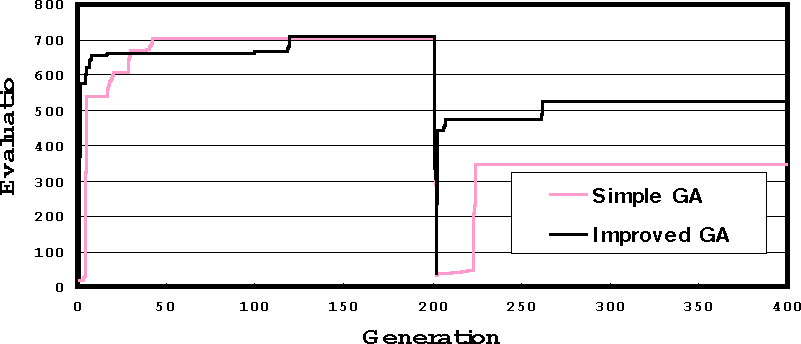
engineering & technology publications
ISSN 1759-3433
PROCEEDINGS OF THE THIRD INTERNATIONAL CONFERENCE ON ENGINEERING COMPUTATIONAL TECHNOLOGY
Optimal Construction Management using an Improved Genetic Algorithm
+Department of Informatics,
*Graduate School of Informatics,
$Department of Informatics, Kansai University, Japan
In this paper, an optimal construction management is dealt with for such a case that a lot of constructions works. Attention is paid to the optimal allocation of workers who are inexperienced or experienced. For conditions to be considered, the experience of individuals, the importance of the construction stage, and cost are taken into account. In order to follow the change of environments, GA is improved by introducing the concept of multi-agent system. Applying the improved GA , it is possible to obtain robust and meaningful solutions even for the problem with objective functions and constraints that may vary time to time. A numerical example is presented to illustrate the proposed method and to compare with the simple GA.
Since the ordinal GA is based on the Darwin theory of evolution, only individuals with the highest fitness to the environment can survive through the natural selection. This implies that the population loses the diversity of solution candidates while converging to the optimal solution. Then, when the environment changes complicatedly, the ordinal GA can't correspond to the change. There arise such problems as the convergence to a local optimum or the stagnation of evolution.
In this paper, an attempt in made to introduce the concept of multi-agent into the GA operation. Multi-agent system uses the cooperative process of solving the problem. The processing results by each agent are integrated by taking their mutual influences in to consideration. In the communication between the agents, the black board model is employed, which can provide the same knowledge for each agent. In the implementation of GA calculation, each individual is an agent and gene manipulation is a black board. The agent can learns the rule by using the effective- ness of gene manipulation, in order to solve the problem regardless of the drastic changes of environment.
In order to illustrate the proposed method, a numerical example is presented, in which the optimal construction management for completing a lot of construction works by the shortest days. As constraints, restriction on experience of construction work, the number of the minimum staffs necessary for each construction work, the maximum days, etc. are prescribed. Moreover, changes of the maximum days, the data of experience, and the number of the minimum staffs are made here as dynamic environment. Figure 75.1 shows the convergence of the both methods. The problem is solved by both the simple GA and the improved GA.
From Figure 75.1, it can be seen that before the environment changes, both GAs provide the result that seldom changes. However, a remarkable difference in two kinds of GAs is seen after the environmental change. In dynamic environment, the validity of the Improved GA using a multi-agent's concept has been proved. However, in the real world, more complicated environmental changes frequently occur, the system that can flexibly respond to such environmental changes is desired.
- 1
- Hiroaki Kitano, "Genetic Algorithm", Sangyo Tosho Publishing Co., Ltd., Inc., Japan, 1993
- 2
- Akihiko Osuga, Masahiro Tanaka, "Agent technology", Kyoritsu shuppan Co., Ltd., Japan, 1999
- 3
- Yuka Yamamoto, Takahiro Sasaki and Mario Tokoro, "Adaptation of Evolutionary Agents toward Changing Environment", Sony Computer Science Laboratory, Department of computer Science, Faculty of science and Technology, Keio University, Japan, 1999
purchase the full-text of this paper (price £20)
go to the previous paper
go to the next paper
return to the table of contents
return to the book description
purchase this book (price £85 +P&P)
